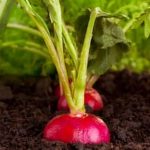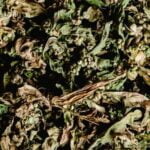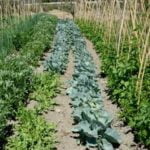Peat moss has long been a popular choice for gardeners looking to improve their soil quality. But can peat moss be used in vegetable gardens? Understanding its characteristics and how it can benefit or potentially harm your vegetable garden is essential.
In this article, we will explore the composition of vegetable gardens, the benefits and drawbacks of using peat moss, proper incorporation methods, alternative options, tips for maximizing effectiveness, and real-life examples of successful use. By the end, you will have a comprehensive understanding of whether peat moss is the right choice for your vegetable garden.
Peat moss is a natural organic material known for its ability to retain moisture and aerate soil. Its acidic nature can be beneficial for certain types of plants, making it an attractive option for many gardeners. However, before incorporating peat moss into your vegetable garden, it’s crucial to have a clear understanding of how it interacts with the specific characteristics of a vegetable garden.
When considering the composition of vegetable gardens, factors such as pH levels, nutrient content, and soil structure must be taken into account. Peat moss can alter these factors in both positive and negative ways. Understanding how these changes can impact the overall health and productivity of your vegetable garden is crucial in determining whether peat moss is a suitable option for you.
Understanding the Composition of Vegetable Gardens
Peat moss is a popular choice for improving the composition of vegetable gardens due to its unique characteristics. The main components of a typical vegetable garden include soil, organic matter, and various nutrients. Soil provides the structure and acts as the medium for plant roots, while organic matter contributes to soil fertility and water retention. Nutrients are essential for plant growth and development.
Peat moss is an excellent source of organic matter for vegetable gardens because of its ability to retain moisture and nutrients. It has a high water holding capacity, which can be beneficial in retaining moisture during dry spells or in sandy soils. Additionally, peat moss has a slightly acidic pH level, making it suitable for acid-loving plants such as tomatoes, peppers, and potatoes.
In terms of nutrient composition, peat moss contains low levels of essential plant nutrients such as nitrogen, phosphorus, and potassium. However, it serves as an effective medium for nutrient retention and slow release when mixed with other fertilizers or organic materials. This characteristic makes peat moss a valuable component in promoting healthy plant growth in vegetable gardens.
| Component | Role |
|---|---|
| Soil | Provides structure and medium for plant roots |
| Organic Matter | Contributes to soil fertility and water retention |
| Nutrients | Essential for plant growth and development |
The Benefits of Using Peat Moss in Vegetable Gardens
Peat moss is a popular choice for gardeners when it comes to enhancing the quality of their soil for vegetable gardens. This natural, organic material is known for its excellent moisture retention properties, which can be particularly beneficial for vegetables that require consistent moisture levels. Additionally, peat moss has a high acidic pH level, making it suitable for acid-loving plants such as tomatoes, peppers, and potatoes.
Furthermore, peat moss can also improve the overall structure of the soil by increasing its aeration and drainage. This is essential for promoting healthy root growth and preventing waterlogging, which can lead to root rot in many vegetable plants. In addition to these benefits, peat moss is also mold-resistant and helps control weed growth when properly applied to the garden bed.
Moreover, peat moss has long been favored by gardeners because it can act as a valuable long-term soil conditioner. As it decomposes over time, it gradually releases essential nutrients into the soil, providing a sustained source of nourishment for vegetable plants throughout their growing season. This characteristic makes peat moss an environmentally friendly option for improving soil fertility and promoting sustainable gardening practices.
| Benefits of Using Peat Moss | Examples |
|---|---|
| Enhances moisture retention properties | Beneficial for vegetables requiring consistent moisture levels |
| Improves soil structure by increasing aeration and drainage | Promotes healthy root growth and prevents waterlogging |
| Acts as a long-term soil conditioner | Gradually releases essential nutrients into the soil |
Potential Drawbacks of Using Peat Moss in Vegetable Gardens
When considering the use of peat moss in vegetable gardens, it is important to be aware of the potential drawbacks that come with its incorporation. While peat moss offers a range of benefits, there are certain aspects to consider before deciding to use it in your vegetable garden.
Some potential drawbacks of using peat moss in vegetable gardens include:
- Acidic nature: Peat moss has an acidic pH, which may not be suitable for all types of vegetables. Certain plants thrive in alkaline soil and adding peat moss could disrupt the pH balance.
- Environmental concerns: The extraction of peat moss can have negative impacts on the environment, such as habitat destruction and carbon emissions. It is important to consider the sustainability of using peat moss in your garden.
- Water retention: While peat moss has great water retention properties, it can also hold onto excess moisture, potentially leading to waterlogged soil and root rot if not mixed properly with other components.
Despite these potential drawbacks, there are methods to mitigate these issues and still make effective use of peat moss in a vegetable garden. It is essential to weigh these drawbacks against the benefits and consider alternative options before making a decision.
How to Properly Incorporate Peat Moss Into a Vegetable Garden
Peat moss is a versatile and beneficial material that can greatly improve the quality of your vegetable garden. When used properly, it can enhance soil structure, retain moisture, and provide essential nutrients to your plants. Here are some steps on how to properly incorporate peat moss into your vegetable garden:
1. Test the soil: Before adding peat moss to your vegetable garden, it’s important to test the soil pH level. Peat moss is acidic, so if your soil is already acidic, adding more peat moss may not be necessary.
2. Prepare the peat moss: If you’ve determined that your soil could benefit from peat moss, it’s time to prepare the material. First, moisten the peat moss in a wheelbarrow or large container by adding water and mixing it well until it becomes damp but not soaking wet.
3. Mix into the soil: Once the peat moss is adequately moistened, spread it evenly over the surface of your garden bed. Use a rake or gardening fork to mix the peat moss into the top 6-12 inches of soil thoroughly.
4. Planting: After incorporating the peat moss into your vegetable garden bed, you can proceed with planting your vegetables as usual.
Remember that while using peat moss can offer many benefits for your vegetable garden, overusing it can lead to overly-acidic soil conditions. It’s crucial to use peat moss in moderation and always follow best practices for proper incorporation and balanced plant nutrition.
Alternative Options to Peat Moss for Vegetable Gardens
Peat moss is a popular choice for improving soil conditions in vegetable gardens, but it is not the only option available. There are several alternative options to consider that can serve similar purposes and offer their own unique benefits. One alternative to peat moss is coconut coir, which is derived from the fibrous husk of coconuts.
Coconut coir has excellent water retention properties and provides good aeration for plant roots. Additionally, it is a sustainable choice as it is a byproduct of coconut production.
Another alternative to peat moss is compost, which consists of decomposed organic matter such as kitchen scraps, yard waste, and leaves. Compost improves soil fertility, structure, and moisture retention while also providing essential nutrients to plants. It also promotes the growth of beneficial microorganisms in the soil, contributing to overall plant health.
In addition to coconut coir and compost, vermiculite and perlite are commonly used alternatives to peat moss in vegetable gardens. Vermiculite improves soil drainage and aeration while retaining moisture and nutrients for plant roots. Perlite aids in preventing soil compaction and allows air to reach plant roots more easily. Each of these alternative options has its own unique characteristics that make them suitable substitutes for peat moss in vegetable gardens.
Tips for Maximizing the Effectiveness of Peat Moss in Vegetable Gardens
Use Peat Moss Sparingly
When incorporating peat moss into your vegetable garden, it’s important to use it sparingly. Due to its acidic nature, too much peat moss can lower the pH level of the soil, which may not be ideal for all types of vegetables. It’s recommended to mix peat moss with other organic materials like compost or aged manure to balance out its acidity and improve its effectiveness in the garden.
Water Management
Peat moss has excellent water retention properties, making it an ideal addition to vegetable gardens, especially in dry or sandy soils. However, it’s crucial to properly manage the watering schedule when using peat moss. Overwatering can lead to waterlogged soil and root rot, while under-watering can cause the peat moss to dry out and become hydrophobic.
Monitor Soil pH Levels
Since peat moss is acidic, it’s essential to monitor the pH levels of the soil when using this organic material in your vegetable garden. Regular testing will help ensure that the soil remains within the optimal range for growing healthy and productive vegetables. If the pH levels become too low due to excessive use of peat moss, consider adding lime or another soil amendment to raise the pH.
By following these tips for maximizing the effectiveness of peat moss in your vegetable garden, you can harness its benefits while mitigating any potential drawbacks. Ultimately, proper incorporation and management of peat moss can contribute to a thriving and bountiful vegetable garden for you to enjoy.
Real-Life Examples and Success Stories of Using Peat Moss in Vegetable Gardens
Increased Soil Acidity and Improved Drainage
One success story of using peat moss in a vegetable garden comes from a gardener who cultivated acidic-loving plants, such as blueberries and rhododendrons. By incorporating peat moss into the soil, they were able to increase the soil acidity to levels suitable for these acid-loving plants. Additionally, the improved drainage provided by peat moss helped prevent waterlogged soil, which can be detrimental to the health of these particular plant species.
Another example is from a vegetable gardener who had struggled with clay soil that was heavy and compacted. After mixing peat moss into the soil, they found that it lightened the texture of the clay and allowed for better air circulation and root development. This ultimately led to healthier and more productive vegetable plants.
Enhanced Moisture Retention and Nutrient Absorption
A success story involving the use of peat moss in a vegetable garden includes a gardener who faced challenges with sandy soil that drained quickly and struggled to retain moisture. By adding peat moss to their garden beds, they noticed a significant improvement in moisture retention, which benefited their vegetable crops during dry periods. The peat moss also aided in enhancing nutrient absorption, leading to healthier and more robust plants.
Other success stories highlight the effectiveness of peat moss in potting mixes for container gardening. Gardeners have reported that incorporating peat moss into their potting mixes resulted in improved water retention within containers, reducing the frequency of watering needed for vegetables grown in pots or raised beds.
Overall, real-life examples demonstrate the positive impact of using peat moss in vegetable gardens, providing valuable insights for those considering integrating this organic material into their gardening practices.
Conclusion
In conclusion, the use of peat moss in vegetable gardens can offer several benefits, such as improving soil structure, enhancing water retention, and providing a source of organic matter. However, there are also potential drawbacks to consider, such as environmental concerns related to peat mining and its impact on ecosystems. When deciding whether peat moss is the right choice for your vegetable garden, it’s important to weigh these factors and consider alternative options.
While peat moss can be beneficial for improving soil quality in vegetable gardens, there are alternative options available that may be more sustainable and environmentally friendly. For example, compost, leaf mold, and coconut coir are all effective alternatives to peat moss that can enhance soil structure and fertility without the negative environmental impacts associated with peat mining.
Ultimately, the decision of whether to use peat moss in your vegetable garden should be based on careful consideration of its benefits and drawbacks, as well as an evaluation of alternative options. By weighing these factors and making an informed decision based on the specific needs of your garden and the principles of sustainability, you can determine whether peat moss is the right choice for achieving thriving vegetables in your garden.
Frequently Asked Questions
Is It OK to Put Peat Moss in a Vegetable Garden?
It is generally okay to put peat moss in a vegetable garden, as it can help improve soil quality by retaining moisture and nutrients. However, it’s important to consider the specific needs of the vegetables being grown and whether they prefer acidic or alkaline soil, as peat moss can be acidic.
Should I Mix Peat Moss With Garden Soil?
Mixing peat moss with garden soil can be beneficial in certain situations. Peat moss can help improve drainage and aeration in heavy clay soils, while also increasing water retention in sandy soils. However, it’s important not to overdo it, as excessive use of peat moss can make the soil too acidic for some plants.
Do Peppers Like Peat Moss?
Peppers can benefit from the addition of peat moss to their growing medium. Peat moss helps improve soil structure and water retention, which can be especially helpful for peppers during dry spells. Since peppers prefer well-draining soil, incorporating peat moss into their growing environment can create a favorable balance of moisture and nutrients for healthy growth.

If you’re looking to get into vegetable gardening, or are just looking for some tips on how to make your current garden better, then you’ve come to the right place! My name is Ethel and I have been gardening for years. In this blog, I’m going to share with you some of my best tips on how to create a successful vegetable garden.





